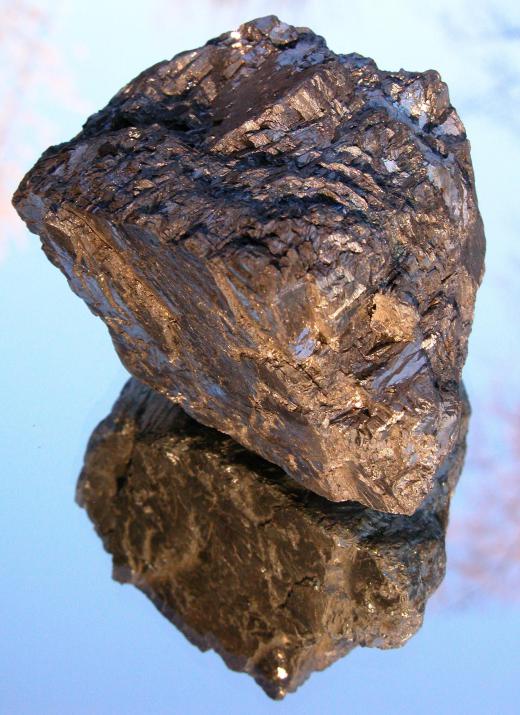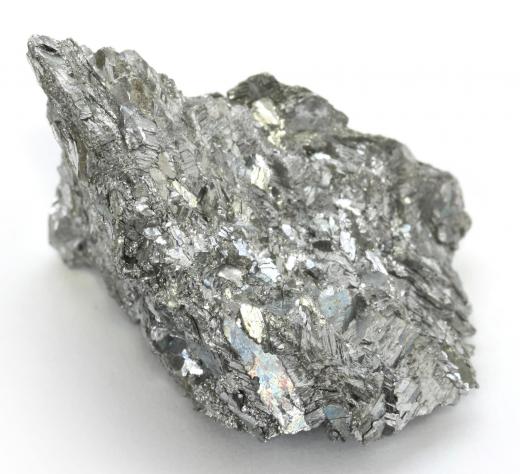Metal raw materials chiefly consist of widespread types of minerals, though metals are also increasingly derived from scrap, waste, and recycled parts that are melted down and refined for the metals that they contain. Among examples of the chief mineral groups for metal raw materials are bauxite ore, which is a compound of aluminum hydroxides, and aluminum oxides mined for the production of aluminum and stibnite ore, a crystalline form of antimony sulfide, Sb2S3, that is mined to produce pure antimony. Other widely used types of metal raw materials include iron ore that is used to produce steel; various oxidized forms of copper ore such as azurite, malachite, and tennantite; and minerals such as sphalerite from which zinc is derived.
Since the most common types of raw materials for metals as of 2011 have been derived from natural ores that are usually oxides or mixed compounds of metals found in developing nations, the mining of such metals has often been used as an economic means to fuel conflict. This has led to government action such as the 2010 United States Dodd-Frank Wall Street Reform and Consumer Protection Act for the regulation of buying raw materials sourced from certain countries. Many metal raw materials from the Democratic Republic of Congo, for instance, such as wolframite, cassiterite, and coltan, are widely used to produce valuable metals like tin, tungsten, and gold, which are used in the electronics and other industries.

Though many metal raw materials are widespread throughout the world, others, such as the platinum group of metals, are rather scarce and confined to limited regions such as Russia and South Africa, which are estimated together to contain half of the world's reserves. The platinum metal group is important in the manufacture of pharmaceuticals and organic chemicals and includes examples like platinum, palladium, and iridium. Some of these important metals such as platinum itself, which is derived solely from the mineral sperrylite, have no other mineral source in nature.

Metal manufacturing also relies heavily on recycled metal raw materials. A May 2011 United Nations Environment Programme (UNEP) report on end-of-life recycling rates (EOL-RR) found that a group of 18 important metals had EOL-RR rates above 50% worldwide. These included such commonly used metals as zinc, nickel, and chromium.
Steel raw materials are one of the most vital of metals for a range of industries, though steel is only generally recycled at a rate of slightly above 50%. The most common recycled metal according to the UNEP report as of 2011 has been lead, with a rate of nearly 80% of the metal being recovered and reused. Other widely recycled metal raw materials tend to be favored both for their net value and ubiquitous uses, such as gold and silver for their value in jewelry and electronics, and aluminum and copper for their use in construction and transportation.
